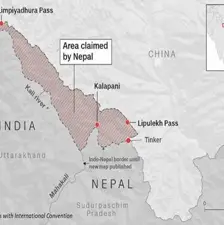Nepal has reignited its border dispute with India, prompting questions about whether the United States might leverage tensions for strategic purposes. Recent student-driven riots tied to social media bans add another layer of complexity to a situation that may impact the region’s balance of power.
The US Might Try To Manipulate Nepal Into Weaponizing Its Revived Border Dispute With India

Key Takeaways:
- Nepal’s revived border dispute with India is the article’s primary focus.
- U.S. involvement is suggested as a possible factor influencing events.
- Student riots erupted after the government banned social media for failing to comply with legal requirements.
- Observers warn that external powers may exploit Nepal’s domestic unrest.
- The piece presents a cautionary stance on the perils of geopolitical maneuvering.
Context of Nepal’s Revived Border Dispute
Nepal’s border tensions with India have surfaced again, generating controversy within the region. According to the original report, some analysts now speculate that the United States might try to manipulate Kathmandu’s response, potentially “weaponizing” the issue in broader foreign policy maneuvering. This dispute has drawn increased international attention as one more flashpoint in South Asia’s evolving geopolitical tapestry.
Possible U.S. Interests
The original content by Andrew Korybko via Substack posits that Washington might see Nepal’s issues as an opportunity to extend American influence in the region. Speculative or not, the underlying notion is that the United States stands ready to capitalize on any internal or regional disagreement that could reshape alliances in South Asia. While the article does not provide definitive evidence, it underscores widespread concerns about the alignment of smaller nations amid powerful geopolitical forces.
Student Riots and Social Media Bans
A key development mentioned in the story is the wave of protests led by students, described as being “sparked by the state’s banning of social media.” According to the report, major online platforms failed to register under Nepal’s legal requirements, leading the government to restrict access. This move ignited discontent among young citizens who rely heavily on digital tools for information and communication. Some observers fear that persistent unrest may become intertwined with Nepal’s external disputes and deepen foreign involvement.
Broader Implications
While the full extent of outside influence remains unknown, the scenario’s potential significance for regional politics is new cause for attention in both Kathmandu and New Delhi. Strategic analysts caution that any intensification of Nepal and India’s friction may attract additional stakeholders from beyond South Asia. The reported speculation about U.S. involvement underscores the complexities facing Nepal as it attempts to navigate delicate relationships and avoid becoming a pawn in international power plays.











